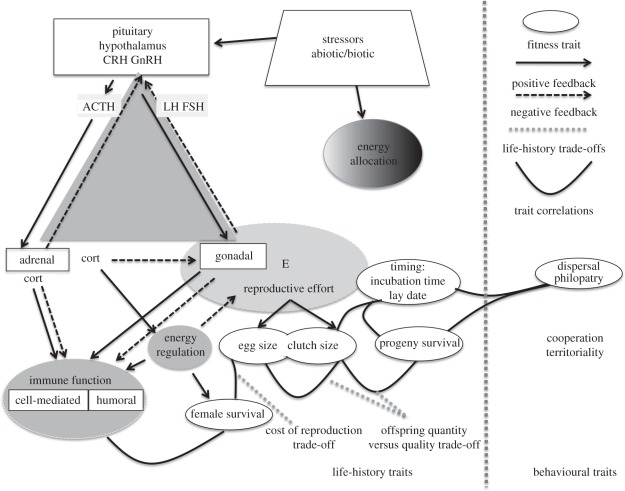Figure 1.
Integration of endocrine control of maternal life history traits and behavior, given that resources are allocated to multiple competing functions: growth regulation, immunocompetence and immune system regulation, reproduction (egg size, egg number), behaviours including parental care, and dispersal. The figure highlights the synergism between the endocrine system and functional modules tied to fitness. The triangle includes the two main endocrine cascades, hypothalamic–pituitary–adrenal (HPA) axis, and hypothalamic–pituitary–gonadal (HPG) axis. Endocrine systems at each vertex interact in positive and negative feedback loops. The principal regulators of life history traits and behaviour are found within the hypothalamus and pituitary, which synthesize releasing hormones, e.g. GnRH, CRF. The HPG axis regulates clutch size and progeny size and is involved with selection and organization of life history trade-offs, via physiological epistasis. Environmental stressors, e.g. extreme climatic events, trigger the HPA axis, which results in activation of the stress response. Release of glucocorticoids mediates the reproductive hormones that affect life history traits. Other trade-offs include immune function modulating reproductive costs that are a result of constraints on resource allocation. Within the ovary, the release of progesterone (via corpora lutea) regulates egg retention, incubation time/parturition. FSH, follicle stimulating hormone; LH, luteinizing hormone; CRF, corticotropin releasing factor; ACTH, adrenocorticotropic hormone; GnRH, gonadotropin releasing hormone; E, estrogen, cort, glucocorticoid.

